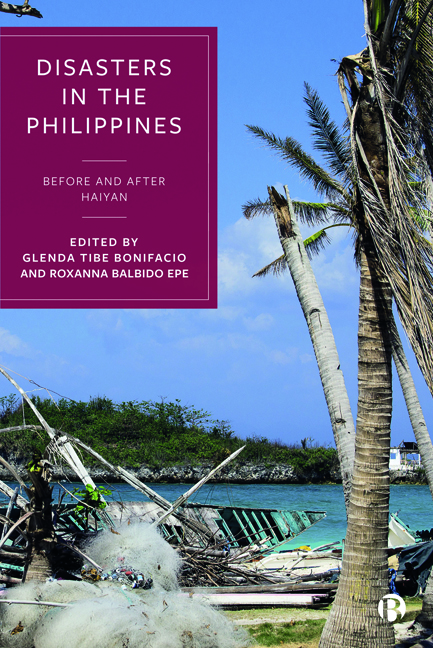5 - Children and Disaster Risk Reduction: Building Resilience from Education, Local Government Units, and Communities
Published online by Cambridge University Press: 18 January 2024
Summary
Introduction
We are living in a world that is continually challenged in addressing disaster risks, coping with the impact of disasters, and building the resilience of the population, especially among the vulnerable groups and communities. The risk of disaster is increasing at the global level, and the world is becoming more hazardous to live in (Bradshaw 2013, 15– 16). The Philippines ranks third as most at risk in the WorldRiskReports (Jeschonnek et al 2016, 2018; Jeschonnek, Kirch, and Mucke 2017), and has alleviated its risk index to the ninth rank in 2019. The Disaster Risk Reduction in the Philippines Status Report 2019 reveals data related to a continuum of threats that are also compounded with the country's young demographic profile. Children represent 38% of the Philippine population (CRC Coalition 2020, 4) and 31.4% of them are poor (Philippine Statistics Authority 2021). Thus, there is a need to reduce disasters risks and vulnerability, management of disaster risks, and build resilience through an integrated and childcentered approach.
Securing the welfare of the people and focusing on the vulnerable groups of the population have been a priority toward sustainable development. Among the vulnerable groups, the children are “particularly vulnerable […] at greater risks […] and most affected by disasters” (Küppers et al 2018, 26). Angelika Böhling and Piere Thielbörger, in their foreword to the WorldRiskReport 2018, emphasize the crucial need for action that requires “comprehensive and participatory concept to protect children in fragile situations and strengthen their rights […] as the only way to create the foundations for coming generations to develop their life perspectives, particularly in high-risk countries” (Jeschonnek et al 2018, 3). Furthermore, the increasing frequency and evolving challenges of disasters impact resulted in a paradigm shift of the global and national disaster risk reduction and resilience (DRRR) frameworks from a reactive approach to an overarching, inclusive, and proactive approach. Thus, a comprehensive and integrated child-centered DRR, managing disaster risk and vulnerability, and building resilience have been integrated into the global development agenda— the Millennium Development Goals (MDGs) and the Sustainable Development Goals (SDGs).
- Type
- Chapter
- Information
- Disasters in the PhilippinesBefore and After Haiyan, pp. 88 - 112Publisher: Bristol University PressPrint publication year: 2023

